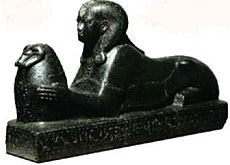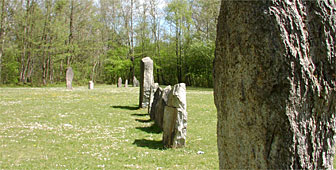“King” of Stonehenge may have been Swiss

Stonehenge, the 4,000-year-old mysterious ring of ancient stones, which is one of Britain's most famous landmarks, may have a Swiss connection.
Archaeologists say that the remains of a wealthy archer – dubbed the King of Stonehenge – found near the site were from the Alps region.
Tony Trueman, a Wessex Archaeology spokesman, said tests on the chemical components of the archer’s tooth enamel confirmed that he had come from an area which is most probably modern-day Switzerland.
He said that it was clear that the man had been important from the sheer volume and value of the finds in his grave and this had resulted in his nickname, the King of Stonehenge.
Important finds
Among the objects were gold hair ornaments and copper knives, making it one of the richest and earliest Bronze Age sites in Britain. The gold is some of the earliest found in the country.
But how much of a link the archer, found just three miles away from Stonehenge at Amesbury, had to the ancient stone ring is open to speculation.
Archaeologists think that the man, who was skilled in metalwork, might have played an important part in the construction of the site and helped to introduce new skills in the area.
“What we do know is that Stonehenge was built about 3000 BC and sometime around 2400-2200 BC people began to put the stones up and right in the middle of that period the archer came over,” Trueman told swissinfo.
“We know that he was an immensely important and influential person and he so must have visited Stonehenge and he must have visited it because he was buried within a short walk of it,” he said.
Sophisticated society
Trueman said that the Swiss would not have had any problems communicating with the Britons as they all spoke a form of Celtic at that time.
He added that there was a lot of international trade and that cultural links with the continent were strong during the period that Stonehenge was built.
“Look at this man, he was from Switzerland or thereabouts, the copper knives were from Spain and France and he came over to Britain and died there,” explained Trueman.
“We’re looking at an immense movement of people, which we don’t expect when we think of the Stone Age or the Bronze Age. We think of people with clubs living in caves and grunting, but this is much more sophisticated society than people think of.”
Stonehenge is a ring of 20-ton stones on the Salisbury Plain and is a world heritage site. The reason why it was built continues to baffle archaeologists, with some suggesting that it was used as a giant astronomical observatory.
swissinfo, Isobel Johnson and Ramsey Zarifeh
Switzerland has several sites of standing stones, the most famous of which is at Clendy near Yverdon-les-bains.
The 5,000-year-old stones were carved into rough human shapes by the area’s Neolithic inhabitants and placed in rows and semi-circles.
The stones were carried to the area by glaciers during the last ice age.
They were reset in their original positions in 1986, and form a rough rhomboid shape, with a line extending out from one corner.
The present stones were erected 4,000 years ago
The inner ring of Bluestones came from Preseli Mountains in Wales
It became a World Heritage Site in 1986
Stonehenge receives over one million visits per year
The site is popular during the summer solstice

In compliance with the JTI standards
More: SWI swissinfo.ch certified by the Journalism Trust Initiative











You can find an overview of ongoing debates with our journalists here . Please join us!
If you want to start a conversation about a topic raised in this article or want to report factual errors, email us at english@swissinfo.ch.